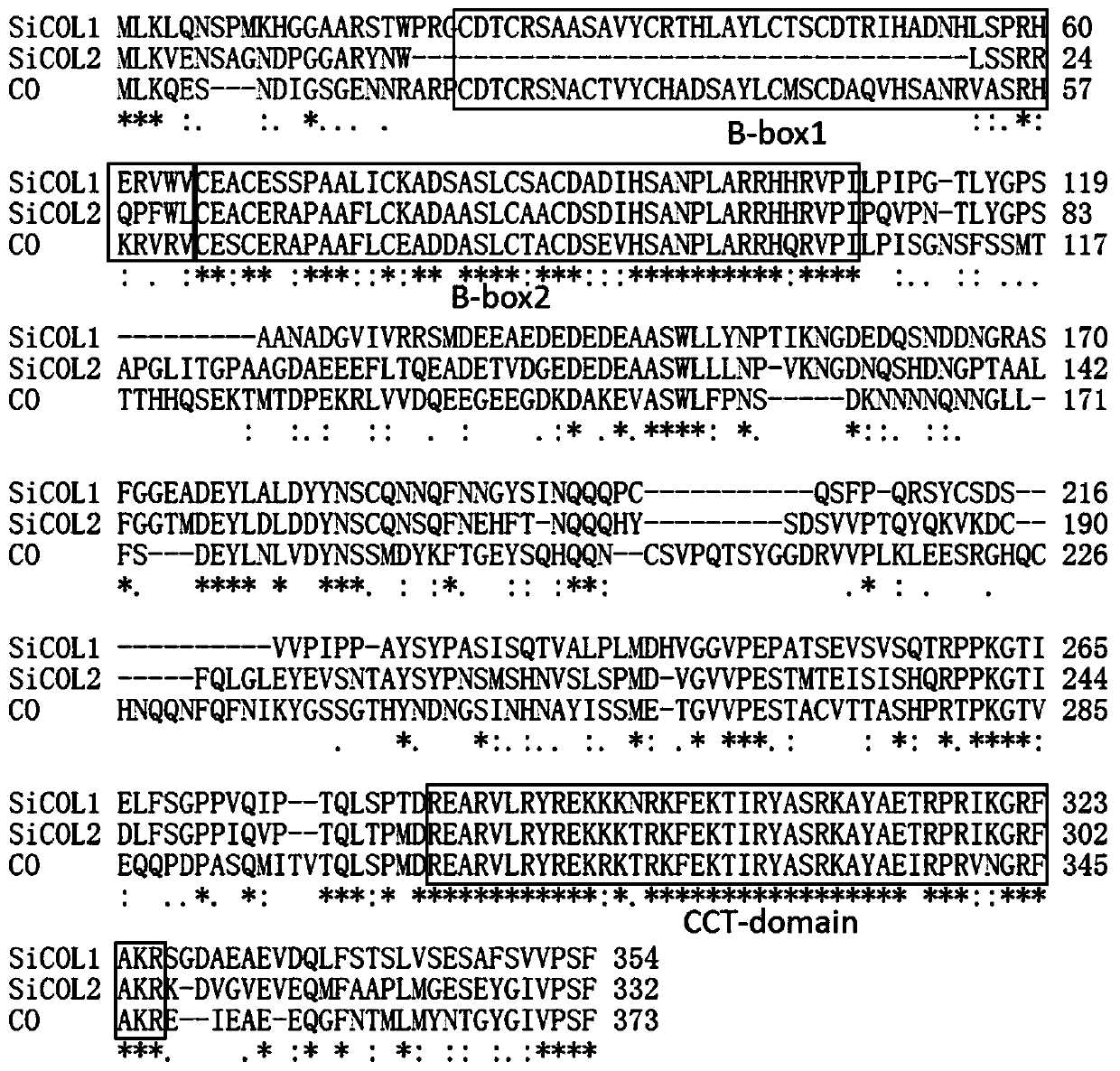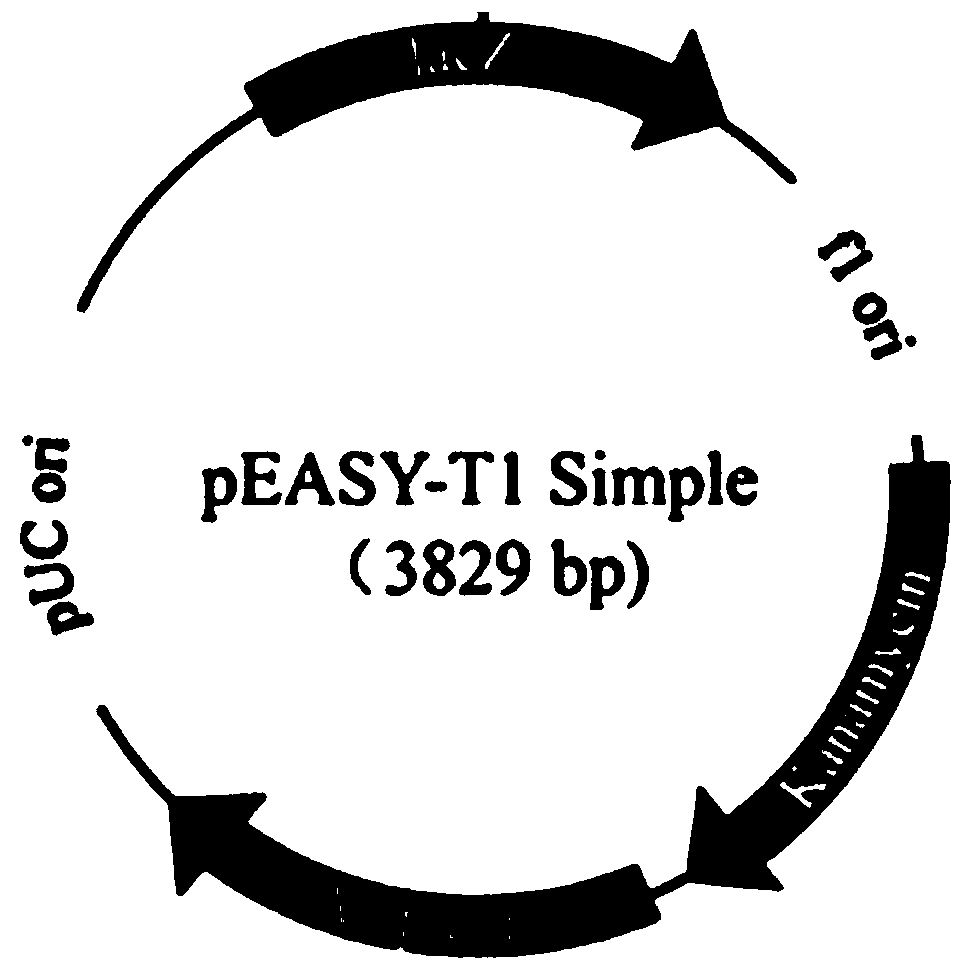Sesame sicol1 and sicol2 genes and their application
A sesame and gene technology, applied to two sesame flowering genes and their application fields in plant photoperiod and flowering time regulation, can solve the problems such as the cloning and functional verification of sesame photoperiod regulation genes that have not yet been reported, and reach the growth period. The effect of shortening and shortening the flowering period
- Summary
- Abstract
- Description
- Claims
- Application Information
AI Technical Summary
Problems solved by technology
Method used
Image
Examples
Embodiment 1
[0029] Example 1: Cloning of sesame flowering genes SiCOL1 and SiCOL2
[0030] Utilize forward primer CCCGGGATGCTGAAGCTCCA (shown in SEQ ID No.5) and reverse primer GAGCTCTCAGAAGGACGGGA (shown in SEQ ID No.6) and forward primer CCCGGGATGCTGAAAGTCGA (shown in SEQ ID No.7) and reverse primer GAGCTCTCAGAATGATGGAA (shown in SEQ ID No. .8) respectively cloned from the sesame variety "Zhongzhi 13".
Embodiment 2
[0031] Embodiment 2: the intermediate vector used for cloning of sesame flowering genes SiCOL1 and SiCOL2 is pEASY-T1 (see image 3 ).
[0032] The PCR product amplified from Example 1 was directly cloned into pEASY-T1 according to the TA cloning method. The ligation product was transformed into Escherichia coli DH5α, and multiplied in it, and the positive clones were sequenced and screened to obtain SiCOL1 and SiCOL2, whose gene sequences are shown in SEQ ID No.1 and SEQ ID No.2; the amino acid sequence of the protein encoded by them As shown in SEQ ID No.3 and SEQ ID No.4.
Embodiment 3
[0033] Example 3: Structural analysis of proteins encoded by sesame flowering genes SiCOL1 and SiCOL2
[0034] The amino acid sequence homology between sesame flowering genes SiCOL1 and SiCOL2 genes encoded protein is 70%, and the homology with Arabidopsis CO protein is 57% and 61%, respectively. And SiCOL1 and SiCOL2 proteins have the same conserved domains as Arabidopsis CO: CCT domain and zinc finger domain. Among them, the CCT domain is a kind of domain specific to flowering genes. Therefore, it can be speculated that SiCOL1 and SiCOL2 have a similar flowering-promoting function to Arabidopsis CO genes. In the CCT domain, there are five and four amino acid differences between sesame SiCOL1 and SiCOL2 proteins and Arabidopsis CO protein; in the zinc finger domain, the first B-box of SiCOL2 is missing, these structures and sequences The difference may result in the functional differences of sesame SiCOL1 and SiCOL2 in regulating flowering.
PUM
 Login to View More
Login to View More Abstract
Description
Claims
Application Information
 Login to View More
Login to View More - R&D
- Intellectual Property
- Life Sciences
- Materials
- Tech Scout
- Unparalleled Data Quality
- Higher Quality Content
- 60% Fewer Hallucinations
Browse by: Latest US Patents, China's latest patents, Technical Efficacy Thesaurus, Application Domain, Technology Topic, Popular Technical Reports.
© 2025 PatSnap. All rights reserved.Legal|Privacy policy|Modern Slavery Act Transparency Statement|Sitemap|About US| Contact US: help@patsnap.com



